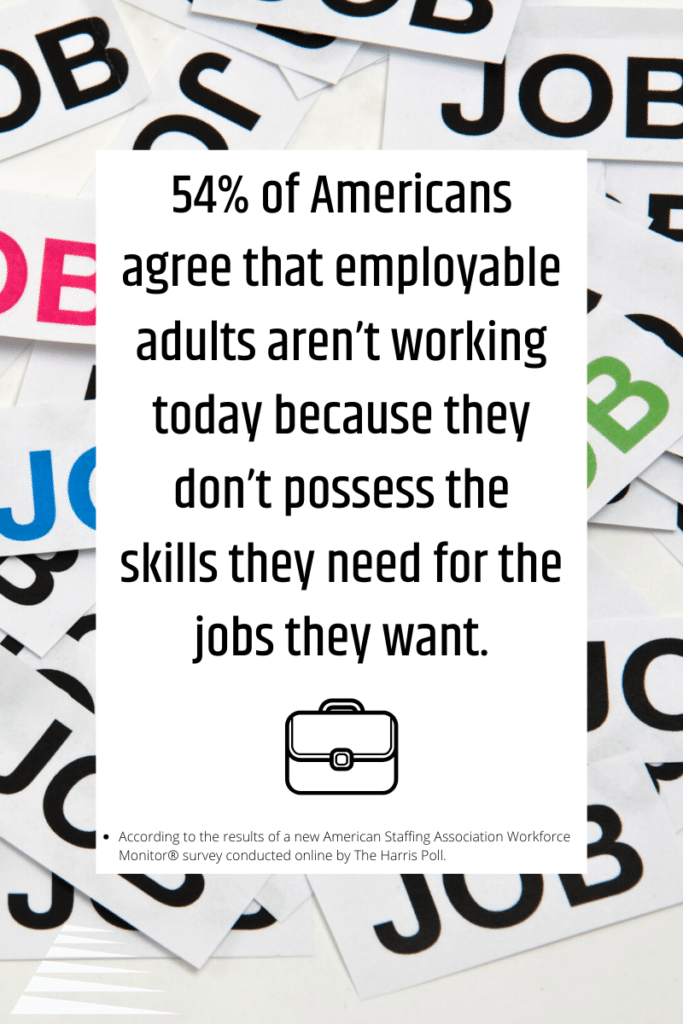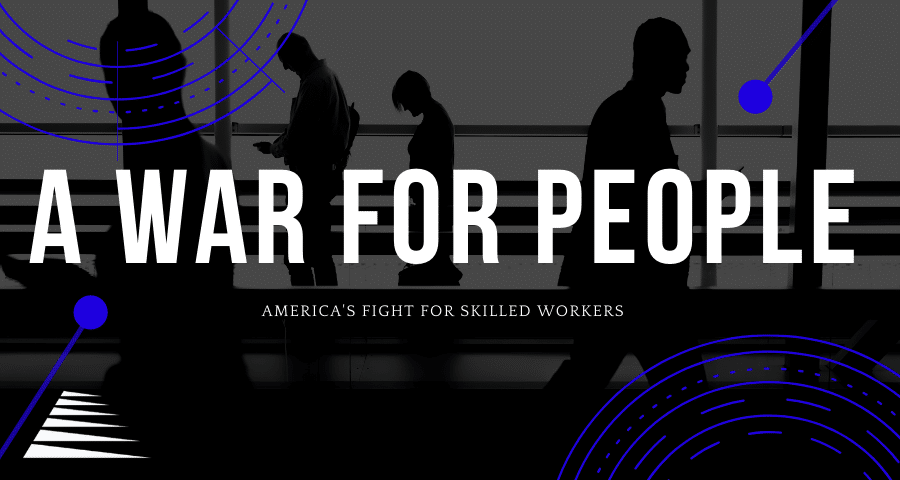For years, there’s been a significant gap in the amount of job seekers and the amount of available jobs. Many people believe that this is due to an abundance of job seekers and not enough jobs. In actuality, reports show that job opportunities are at an all-time high, with the labor shortage leaving nearly 1.4 million roles open.
For a consistent record of nearly 18 months, the number of open jobs has been significantly higher than the amount of people applying. According to data released by the US Department of Labor, there were 7.4 million job openings in June but only 6 million looking for work. So where are those 1.4 million people and why are they not being hired?
US EMPLOYEES AND LACK OF SKILLS
According to the results of a new American Staffing Association Workforce Monitor survey by The Harris Poll, approximately 54% of Americans agree that adults aren’t getting hired because they don’t possess the necessary skills needed for the jobs they want. With jobs requiring more prerequisites than ever before, job seekers are simply not matching up to what companies are looking for.
This continued trend of open jobs is not only limiting job seekers, it’s limiting employers. If not resolved, the skill gap is expected to branch across multiple industries and companies, affecting more than just the blue-collar and lower-paid industries.

There are already more open jobs that people seeking work in nearly every industry. Some companies have resulted to raising pay, adding perks and eliminating restricting requirements like drug screening to fill their roles. But should that be the answer - employers lowering skill expectations to fill roles with subpar candidates?
EXPERIENCE AND THE SKILLS GAP
Another contribution to the increased amount of open jobs is the amount of baby boomers retiring this decade. Boomers account for over a third of the workforce, leaving millions of jobs in their wake till 2029. With the rise in retirement, Gen X, Millennial and Gen Z workers are needing to step up to make up for the shortage. This is compounded by lack of experience throughout the Gen Z and Millennial populations. These workers have little real-world experience and typically do not bring enough experience alone to make up for the older generation.
Although it is majorly believed that the skills gap is what is causing the labor shortage, others contribute it toward strict job requirements. It is believed that the millions of unfilled jobs are the result of outrageous employer skill set expectations. Data indicates that 61% of full-time entry-level jobs require at least 3 years of experience. This greatly limits college grads and people without degrees who may not have the ideal traits when you need experience to gain experience, oftentimes requiring these candidates to look for supplemental income.
AN INSIDE LOOK
While there have been many studies about the long-term work and financial benefits to obtaining a college degree, recent college grads and people without degrees are affected the most by this skills shortage. Nowadays, a degree isn’t enough to score your dream job and desired pay. People with more experience are being paid more money with better benefits than those with/without a degree and limited experience.
Blue Signal had the opportunity to speak with recent Arizona State University graduate, Alexander Klampert, about his recent graduation and job search. He has been looking for work for a few months now, but to Alex it feels like a lifetime. When asked why he hasn’t found the right fit, Alex showed frustration with the advanced skill requirements for jobs he was seeking.
“There were a ton of jobs that peaked my interest and seemed like a good fit,” Alex stated. “But a lot of the jobs that were listed as entry level positions required years of previous experience.”
Although Alex does have previous internship and real-world working experience, his background does not compare to someone who has been working for years. Whether or not the skills gap is a result of too many strict background requirements or the simple lack of qualified applicants, it continues to be the common denominator.
A FINAL NOTE
The cycle of finding employees in a flourishing job market calls for a deep dive into required skills. In order to compensate for this gap, it’s expected that companies will need to start putting in more effort, time and money to attract the right candidates. Without distracting from the real work hiring managers are tasked with in their roles, recruiters can support this talent hunt with the expertise, market knowledge, and focus needed to find the perfect candidates. When taking advantage of the services recruiters have to offer, companies are able to find quality candidates without sacrificing the traits they desire in an employee. Recruiters have the time and experience needed to look past a resume, and to the real value a candidate could bring to a role. Although difficult to find, those people are out there. Recruiters use their entire 9 to 5 to dig through the under-qualified to find the qualified.
It’s more important than ever to take advantage of the resources around you and to not settle for employees with lower skills just to fill a role. This will result in high employee turnover rates and dissatisfaction, leaving companies right where they started. The job war occurring throughout America and its workforce is real, and it doesn’t seem to be coming to a resolution anytime soon. The skills gap may continue to widen, but those prepared companies that have invested in their talent searches will have a better chance of winning the battle, if not the war.
Want to get in on the action?
Drop us a line or follow us on social media!

